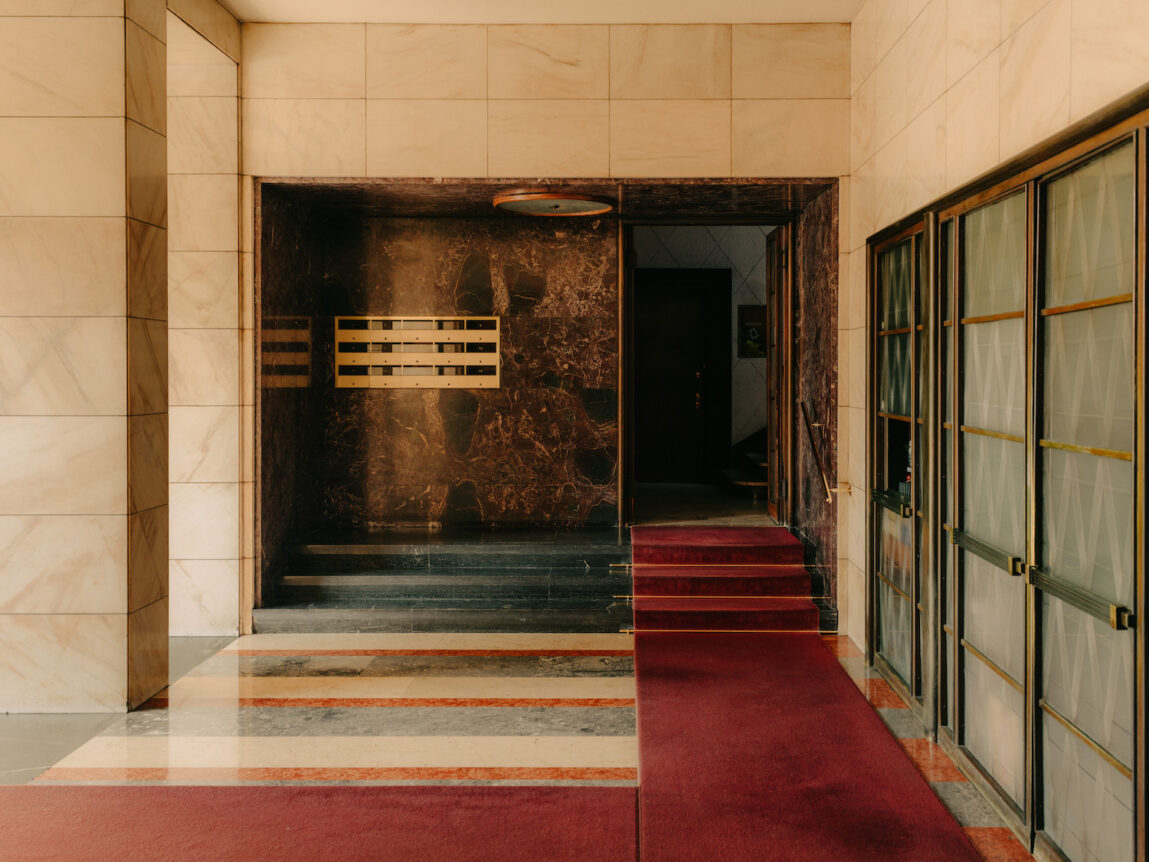TEXT & INTERVIEW Dzenana Mujadzic | Published in CHAPTER №VIII »elements« – summer 2023
Julius Hirtzberger says everything in his life has something to do with places and change of place. This is also unmistakably reflected in his works, in which he manages to transform public areas of life into emotionally charged places of longing. We talked to him about real, but also mental places and the interaction between emotional and visual components in photography.
Chapter Your series »Entrances of Milan (ongoing)« documents impressive door portals in Milan. In addition to the actual subject, what importance does the emotional component – defined here by the color quality of the images – have in your work?
Julius Hirtzberger Apart from the fact that they are often simply incredibly beautiful, the entrance areas of Milanese buildings are of very central importance and often define the entire house. One could argue, »If you know the entrance, you know what the house looks like, how it feels, and who lives there.« My images of Milan doorways also reflect two central aspects of my work: first, it is very much about longings and places of longing, but mostly about how they feel, which is why I tend to play with emotional components in my work rather than deal with things or places in a merely descriptive way. And on the other hand, this concrete motif allows me to show an excerpt that ideally forms a very easily accessible, but just not quite complete basis, which inevitably awakens one’s own imagination and thus quite unconsciously expands and completes the image. The longing arises consequently only in the head.

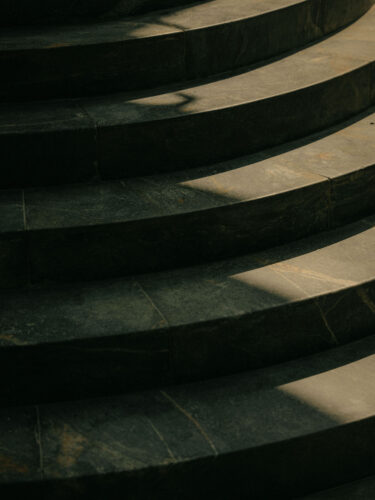
Chapter Would you say that the depiction of real places is often stylized into so-called places of longing through the almost exaggerated atmospheric representation in your photographic works?
Julius Hirtzberger As already mentioned, my pictures should be as accessible as possible for the viewer. I do not claim to construct anything in my work that I would not have observed in the same way, but I do like to use a certain subtle exaggeration in order to communicate more clearly. The more subtle the scene on which the picture is based, the more I look for the appeal in atmospheric representation, for example, the play with light. In addition, the viewfinder with its limited field of view »forces« me to focus on what actually makes up the room or scene. Viewed in isolation, it is these often inconspicuous details that exude a great deal of power. And admittedly – even if I try to avoid it as much as possible – my work is certainly not fully inspired by current aesthetics – especially those in social media – but at least indirectly influenced by them. And social media is known to be a place where exaggeration wins.
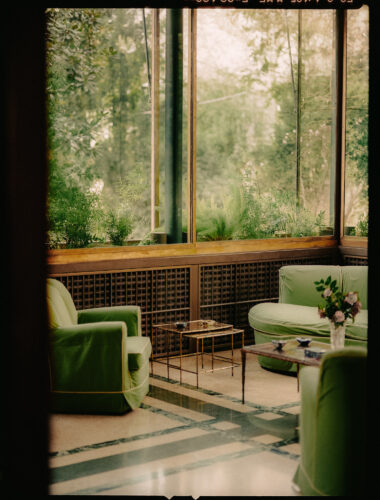
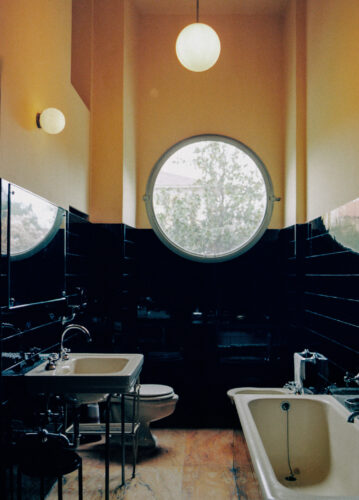
Chapter As a photographer, how does your view of a space change when it’s deserted?
Julius Hirtzberger What interests me about a space is fundamentally what it triggers in us, how we interact with it, and how we move through it. In practice, this is easier to show by at least including traces of people. In a private setting this works too, but rarely unnoticed. In particular public spaces, however, where just observing would work very well, it almost always means that people have smartphones in their hands and are using them intensively. Smartphones, however, are clearly incompatible with my intended display of timeless elegance. In this respect, I prefer deserted rooms from the outset and then photograph them in return in such a way that one imagines oneself to be in them in a certain way.

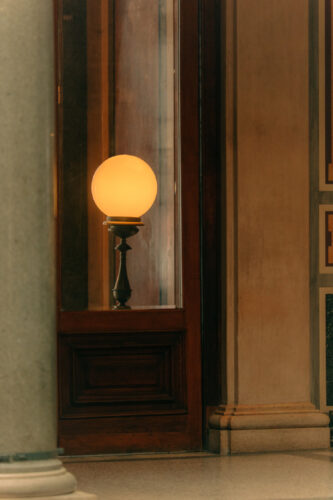
Chapter More generally, can art – and specifically photography – be seen as a kind of mental retreat?
Julius Hirtzberger Both. In the creative process, I see photography as a mere means to an end. If you like, I never take photographs for the sake of taking photographs. When (digital) negatives become finished images, however, there is something magical about it. So if a series is of particular significance to me, post-production – whether in the darkroom, or even on the computer – can create an environment in which I can lose myself in a pleasurable way. However, a »real« mental retreat for me personally only occurs when I put the camera down, leave my own work behind, and lose myself in the images and art of others.



